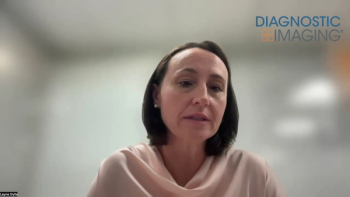
Three-D measure of metabolism uses FDG to track response to mesothelioma therapy
Patients with mesothelioma, a disease of the lung lining caused by exposure to asbestos, may someday benefit from a new 3D PET measure that helps accurately and quickly measure response to chemotherapy, according to a study published in the Journal of Nuclear Medicine.
Patients with mesothelioma, a disease of the lung lining caused by exposure to asbestos, may someday benefit from a new 3D PET measure that helps accurately and quickly measure response to chemotherapy, according to a study published in the Journal of Nuclear Medicine.
An estimated 3000 malignant mesothelioma cancer cases are reported every year in the U.S. The most common type, pleural mesothelioma, represents about three-fourths of cases overall.
Measuring response to therapy with CT has proven more challenging for this cancer than other types of tumors. Criteria from the Response Evaluation Criteria in Solid Tumors (RECIST) trial have been adapted for mesothelioma, but measurement is difficult and time-consuming. It may be possible to measure response only after several treatments.
Volume-based measurement of tumor with FDG-PET is helpful in predicting response after just one round of chemotherapy, according to a study published in September by researchers at Sir Charles Gairdner Hospital's PET Center in Western Australia and other area research facilities (JNM 2007:48:1449-1458).
The researchers developed software to assess total glycolytic volume (TGV), a 3D measure that reflects tumor volume and metabolic activity on FDG-PET scans. The value of both TGV and maximum standardized uptake value (SUVmax) on PET were compared with the CT measures, using RECIST criteria.
The 23 patients involved in the study were set to undergo chemotherapy with cisplatin and gemcitabine. PET was performed before and after the first cycle of treatment, and contrast-enhanced thoracic and upper abdominal CT scans were done at baseline and after every treatment.
CT results were used to make decisions about therapy, but PET assessments did not affect treatment. Based on the imaging studies, radiologists determined whether there had been a complete response, partial response, or stable disease.
The results indicated TGV is very useful for measuring effect on tumors after just one round of chemotherapy. It proved more accurate than both SUVmax and CT measures for predicting survival.
"Metabolic imaging has the potential to improve the care of patients receiving chemotherapy for mesothelioma by the early identification of responding patients," the authors said. "This technology may also be useful in the assessment of new systemic treatments for mesothelioma."
For more information from the Diagnostic Imaging archives:
Newsletter
Stay at the forefront of radiology with the Diagnostic Imaging newsletter, delivering the latest news, clinical insights, and imaging advancements for today’s radiologists.



























